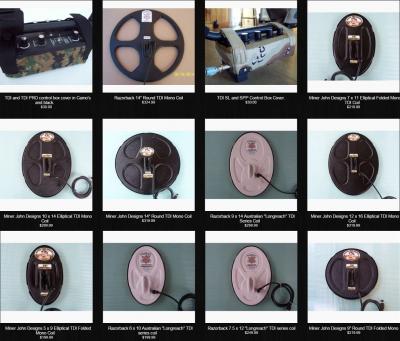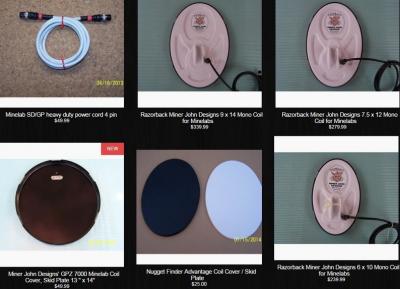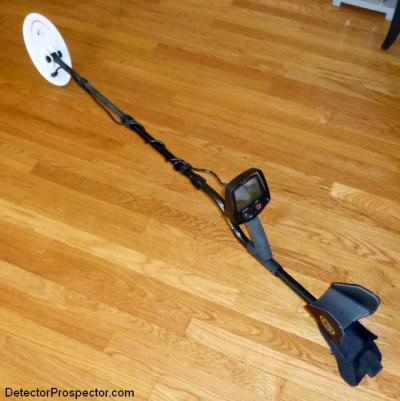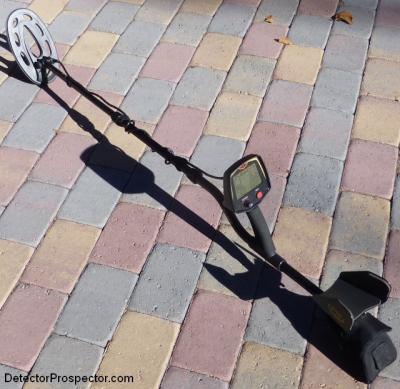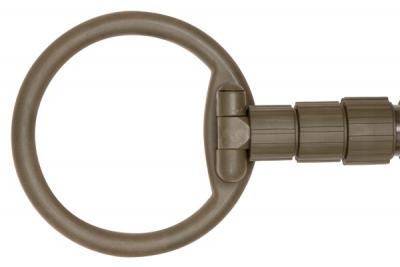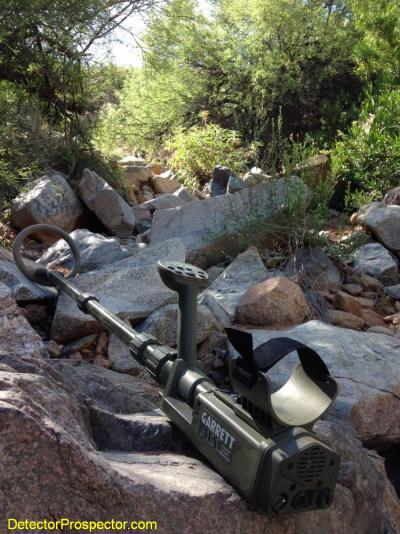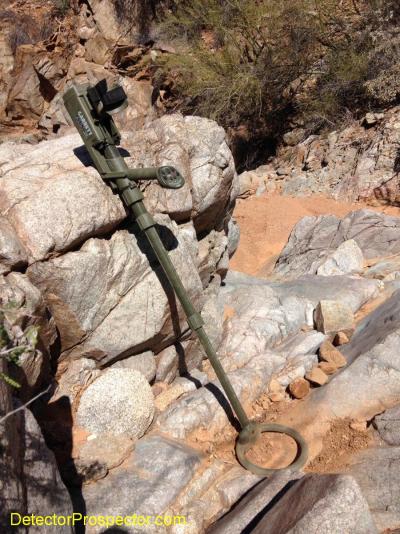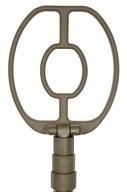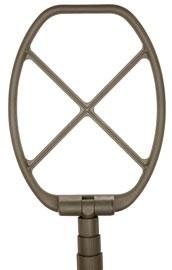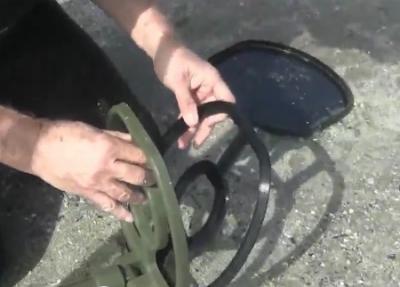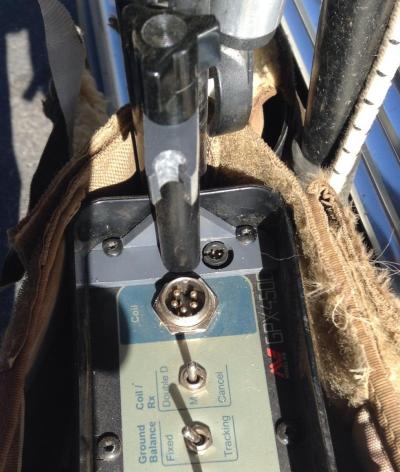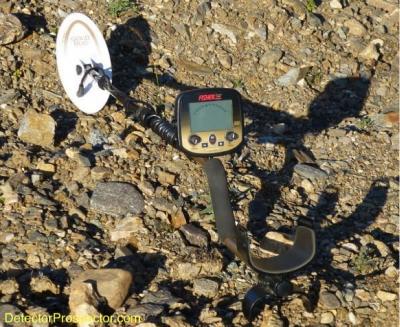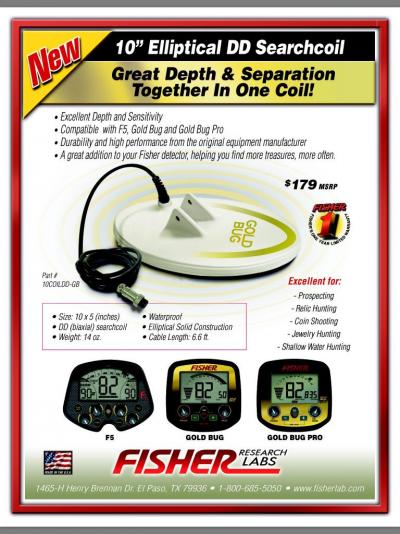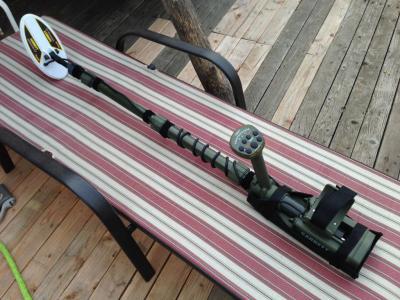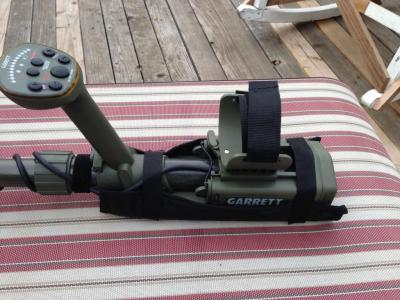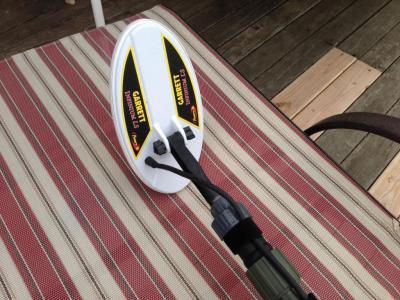Search the Community
Showing results for tags 'coils'.
-
Heading to Rye Patch for the weekend and bringing my Nokta with and just curious as to the best size coil to use...am I looking deep ...shallow or what???? I've heard things like going over with a big coil then over the same area with the smaller coil....honestly this is where inexperience green comes in...thnx
-
In the past we have used VLFs for Nugget hunting and everyone was over the moon with their machines and since the Birth of the PI a lot of people put down VLFs, Which is A Bit unfair Really, We have seen all the manufacturers Telling us all how good their machines are and about the Difference with their tracking systems etc etc, In OZ a certain Famous Gold Nugget was found with A Garrett and that was a VLF although the nugget was Huge it was found about a Foot Deep, No Doubt our Machines have moved on Since the 1980s and Now we have different types of Tracking systems, The Theory of these system is to Balance out the Ground and keep the Detector running Smoother by making the Ground Invisible to the detector, Well If This Is The Case then why when we GB our machines Does the Ground still give us Problems, Like Drag down the VDIs or make Gold Give an Iron Signal or Reduce the Depth of the machine when the Ground balance was supposed to Take Care of that Problem?? So If the Ground is still causing problems It makes me Wonder if I am in fairly hot Ground and I wave my coil Over a 2 ozt Nugget ? ( I wish ) would I still hear it at about 7 to 8+ inches using My MXT, Or Would My GMT do it better. I know the 14 kHz will work better and deeper in hot ground, But after reading A Famous prospectors comments I am not sure about which machine would find that 2 ozt Nugget easier. Thanks Guys,, John
- 6 replies
-
- coils
- goldmasters gmt
-
(and 1 more)
Tagged with:
-
I did a search on this site but couldn't find the answer. I see from Minelab's "coil chart" that the Commander coils are interchangeable between the different series of P.I. detectors SD/GP/GPX (if I am understanding the chart correctly). Does this only apply to the Commander coils? Will a nugget finder coil that is in use now on a GP3500 be compatible with a GPX 5000 as well? Thanks. Dean
- 4 replies
-
- coils
- minelab sd gp
-
(and 1 more)
Tagged with:
-
Not sure when this was updated; Steve's post on the v3i back in September mentioned that White's wasn't making them so I'm guessing that this is newer. It does note that it's not v3i compatible as Steve found out - DFX/MXT are the only two listed. http://www.whiteselectronics.net/calif/accessories_loops_.htm It does say "Currently Unavailable" so I'm not sure if it's too new or if it's dead. -mox
-
Steve and others, When hunting in the desert or on the beach there are always 'side signals' which indicate a target is near. (When you are several inches away from an aluminum can for instance you start to hear it.) Sometimes this is a source of interference and other times it leads to a successful target find. Are any coils better than others for producing a larger, useable off the coil signal that makes for a virtually larger coil than its measured size? Mitchel
-
I have asked this question to many very good detectorists and have got varied answers. Some say yes on the tiny stuff and some say the protective cover isn't thick enough to ever be a concern. I have heard it said that its more likely to reduce depth / sensitivity on a VLF but not a PI. It would be nice to get some kind of consensus on this subject and thanks.......Rob
-
Quick question guys, Do all the coils on these machines interchange? Also how good is xt17000 model?
-
I was curious just how a dual D coil would work on a TDI and this is what I found but first, I need to say my Dual D differs a little from ML's or Minelab's design a little. The reason is simple, I wanted to use what I already had made and just modify the mounting. My main TX coil looks basically the same is those in the posts of the dual D coil, but my RX coil is a little different. Instead, my two D coils are part of one large winding shaped into two D's, with a half twist in the leads passing through the center of the TX winding A simple half twist puts one winding out of phase with the other RX winding, so cancellation is the same. Ok, here are the results. First, the coil is quite sensitive, very quiet, and requires no ground balance signal at all. At least, it doesn't at my house. The detector is so quiet with or without the GB on, it is clear that I could increase the gain and, thus, the depth when using this coil. The coil housing I used is a 12" by 9" so it is smaller than the factory 12". However, the sensitivity is close to the same I am also betting I can increase the windings in the receive with little to no major noise effect,and possibly a little gain. I also have an idea to increase the gain another way. Right now, I see a depth increase on the TDI since I can run with the GB off just fine even over really bad ground, but I feel I can do much better with a few other tricks. So, it is possible even the old detectors have life left. Reg
-
VLF detectors can come with DD or concentric coils. This is similar to but not quite the same thing as DD versus mono on a pulse induction detector. There are three basic coil types in wide use, Concentric, Double D (DD) and Mono. A VLF detector transmits and receives simultaneously and so there must be both a transmit coil and a receive coil. A pulse induction (PI) detector can alternate between transmit and receive and so one coil can be employed as both transmit and receive in an alternating fashion. There is confusion on this but simply put VLF (induction balance or continuous wave) detectors do not employ mono coils. A VLF can only employ the concentric or DD options. A pulse induction coil can work with all three types. Metal detector coil types illustrated - concentric vs DD vs mono VLF detectors are more alike than different these days. One thing that can make a real difference is what coil the detector comes with. Two very similar models will be quite different if one comes with a 12" round concentric, and another an 11" x 7" DD. In this case the very same detector can be turned into two different detectors by changing coils. Here are a couple rarely seen on the F75 - the 10" x 5" DD and 10" elliptical concentric. A big difference between the Teknetics T2 and Fisher F75 was that the F75 came later and the ability to use concentric coils was added. The T2 can only use DD coils. Why DD or concentric? DD coils are all the rage these days. However, concentrics have more consistent detection patterns with less dead spots up close. Every notice how that DD coil goes wacky on shallow targets? And concentric coils are much better at identifying flat ferrous targets like bottle caps. Here it is from the guy that should know best, Dave Johnson, lead designer on the F75. About Search Coils by Dave Johnson Search Coil Field Shape by Dave Johnson Coil Basics by Carl Moreland I like the 10" DD for the solid design, better for working in stubble or other locations where an open coil might hang up. The concentric just for being better behaved. The DD is the better prospecting coil for bad ground. Concentrics do well on milder ground. A note on coils. The blade like knife edged detecting pattern depicted in DD marketing ads, and even the diagram above, is largely myth. Electromagnetic fields radiate and simple coils cannot focus them into beams. A round concentric coil has a search field shaped like a soccer ball cut in half. A similar size DD coil will have a search field more like a football cut in half lengthwise. If you ever doubt this, just fire up your detector with a DD coil, flip it over, and run a coin under the coil noting where the signal fades at different locations under the coil. This is best seen via true all metal modes, as disc modes suppress the edge signal to a large degree. But it’s there, and targets under the edge of a DD coil will mask centerline targets to a degree that would surprise most people. Finally, depth is more related to coil width than coil length. Think of a 5" x 10" coil as a stretched out 5" coil, not as a skinny 10" coil. That is why when listing elliptical coil sizes you will often see me putting the small number first. Marketers do it the other way around so you tend to think you are getting more than you are. A truer picture can be had by comparing the total area of a coil, one to the other, but for quick and dirty comparisons, comparing by width will give you a more conservative idea of comparative coil performance, than comparing by length. Fisher F75 with 10" Elliptical DD Coil Fisher F75 with 10" Elliptical Concentric Coil
-
Anybody use this coil and would be willing to share their thoughts?
-
I have 2 Minelab GP 3500 detectors that both came with 11 stock coils. However it does not indicate anywhere on the coils if they are DD or Mono. Does anyone know if all GP 3500 stock coils were DD, or did they ship some with Mono coils. I suppose I could put one on and fire up the detector and test it, but I'm worried that I could damage the machine running a mono coil in DD mode, another question I would like to know the answer to. So any Minelab experts out there? Scott www.bucketdigger.com
-
8 inch coil hasn't any serial number... so I think this is the same coil from Recon... how to check it?
-
Anyone have values of each coil weights and shaft weights - carbon and OEM?
-
Here I go again thinking outside of the box. We have a round coil like the SDC 2300 will have .Now your out in the field and you need a coil with a different shape to get between the rocks. This new coil will have a hinge at points around it. Now all you have to do is push in on the sides of that round coil to fit the size you need at the time. Each hinge point has a waterproof cover of canvas on the inside to keep out the dirt. If a toy company can make a transformer. Then why can't we make a transformer coil? Chuck Anders
-
While out on the Sawtooth adventure, Dee tried a GB Pro 5" coil on her F-75. Guess what.... it worked! Steve, any comments about that?
- 9 replies
-
- fisher gold bug
- fisher detector
-
(and 1 more)
Tagged with:
-
All the nugget hunting I have done with the Garrett ATX so far was done with the standard 10" x 12" DD coil that comes with the unit. That coil is a very good coil but as my story at http://www.detectorprospector.com/steves-mining-journal/gold-nugget-detecting-with-garrett-atx.htm illustrates it has a couple quirks. The best sensitivity to small gold is in the inner coil area so it is hard to get the hottest portion of the coil close to objects like rocks or stumps. But the main problem is the DD coil is prone to false signals when knocked, making it tiresome to manipulate in rough ground. I hoped the 8" mono might help with these issues. ATX™ 8 inch Mono Searchcoil PN: 2234000 So I put in quite a few hours with the 8" mono in some rough terrain. I was not so lucky as to find any gold but recovered a handful of small ferrous targets, mostly short bits of wire and portions of nails. All pretty small stuff wedged in crevices in the bedrock wash locations I hunted. I also recovered quite a few non-ferrous targets, mostly bullets and some brass rivets. Some of the lead bits were quite small and overall I was very happy with the depth and sensitivity I was seeing. The locations I hunted were not prime gold areas but gold is present and the number of non-ferrous targets recovered proved the places were not completely hunted out yet. The 8" mono proved just as prone to false signals when knocked as the stock DD coil. The good news is it is lighter and the machine balances better with it on so it is less strain on the arm working the coil effectively for long hours. I do not want to overstate this issue with the coil falsing when knocked because I can hunt effectively with an ATX. But it is an issue that needs to be noted. Well designed detector and coil combinations do not suffer from this flaw and it adds extra effort to the hunt being sure to manipulate the coil in a fashion that does not lead to constant false signals. I much prefer coils I can put anywhere I please in any way I please without a false signal being generated. I cannot imagine how the epoxy filled coils can be the source of the issue so I presume it is the cable that generates the signals when moved in the course of a coil impact. Since the coil cable is inside the rod assembly there is not much I can do to experiment with that theory. If the cable was external to the rod perhaps strapping it more firmly in place would help. The 8" mono does have good external edge sensitivity to small items and the coil does work better in rough terrain. You can get the sweet spot closer to obstructions and the edge of the coil can be worked down into crevices. Quite a few of the targets I recovered were in bedrock crevices and sounded directly on the edge of the coil. One big factor with the 8" mono is that the ATX iron discrimination check will not work with it. If you push the button to engage the check you get a repeating tone that tells you the feature is not in effect. The iron check is a nice feature and this alone may deter someone from wanting to use the mono coil. However, I tend towards digging all targets myself so this did not bother me and in fact I am ok with the temptation being removed entirely. Personally I just do not trust discrimination systems much. Overall I prefer the 8" mono operating characteristics and for uneven, rough terrain it is my preferred coil. I also much preferred it for in water use as outlined at http://www.detectorprospector.com/forum/topic/102-garrett-atx-review-beach-detecting-in-hawaii/ For flatter open terrain I would stick with the stock coil. The main problem however is that it is very hard to justify the 8" mono to most people given the fact that when you buy it you are forced to buy an entire telescoping rod assembly also. This drives the price of a decent coil option up to the point where it is a significant fraction of the original purchase price of an ATX. With a manufacturer suggested list price of $529.95 discounted to $450 this coil unfortunately will probably go underutilized by ATX owners.
-
From page 27 of the Garrett ATX Owners Manual: "Coil covers: Use a coil cover to protect the coil from abrasion and damage and prevent false responses that may occur when the coil abruptly impacts a rigid object such as a large rock, etc." I agree, especially when coils have an MSRP over $500, that you want to protect them. Nugget detecting in particular subjects coils to a lot of abrasion and hard knocks. Standard Garrett ATX Searchcoil 10" x 12" (25 x 31cm) DD Coil Part Number 2234600.....$529.95 Optional Garrett ATX Searchcoil 8" (20cm) Mono Coil Part Number 2234000.....$529.95 Excellent depth on small targets. Enhanced maneuverability in heavy scrub and tight areas. Optional Garrett ATX Searchcoil Deepseeker® 15" x 20" (38 x 50cm) Mono Coil Part Number 2234100.....$599.95 Use for locating larger and more deeply buried objects. Includes surface debris elimination. Garrett has been playing catch up, as even existing coils like the round 8" mono do not have a scuff cover available yet. Still, Garrett is on it, and at least two coils are now being made for the stock DD coil, a closed and an open scuff cover. Here is a picture of them but I have not been able to find part numbers yet. Hopefully Ken or one of the other dealers can chime in with part numbers and pricing. Scuff covers for Garrett ATX 10" x 12" DD Coil For those of you without a scuff cover do not be overly concerned. I have been using my ATX full bore without scuff covers and the end result is that the bottoms of the coils are scuffed and lightly abraded. My 8" mono in particular got a hard go of it in Hawaii. The epoxy bottom is tough and it will take a lot of use to have an appreciable effect so I would not worry too much about it from a service aspect. The main concern is when you go to sell the detector, a scuff cover means the coils look closer to new than well used. They are a good investment for that reason alone in maintaining the resale value of the detector.
-
I recently purchased a new product and found that it works so well I thought I would share. For those of us that use a Minelab we all know how sensitive the coil wire to the box attachment is. There have been a number of attempts to solve this and most use the handle mount to add something that grabs the coil wire. None of those approaches solves the issue of shaft flex and will help but still allow some falseing. This new approach mounts directly to the control box and stops the coil wire from moving when the shaft flexes. I used it for a full day and had zero falseing on my 4500. Too bad Minelab does not put a much better connection on their machines, but this will work till they do. Bill Southern at Nuggetshooter.com sells them and they retail for $42.00.
-
The Gold Bug Pro had turned into one of my favorite prospecting machines, especially for trashy areas. Ray Mills and I have been bugging (get it?) Fisher to put the machine out with the 10" elliptical coil as stock. In my opinion it is the best all around coil for the detector and also makes it look like it should as a prospecting detector and cousin to the Gold Bug 2. Right now you can only get the coil as part of a package or as an after purchase accessory. The coil works on the Fisher F5, Gold Bug, Gold Bug Pro, and Teknetics G2.
-
After using a GPX 4500 for a few years I was reading and watching videos of the new Garrett ATX. I was most impressed by how quiet it was dealing with hot rocks. I ordered one from Arizona Outback and received it in a couple of days. I always get excellent service from them. Through the holidays practicing in the yard and a quick trip to a gold location I noticed something didn't feel right. Thoughts came to me like maybe i should have kept my 4500. The ATX handled the hot basalt cobbles and boulders a lot better than my 4500, but the coil was awkward getting around and in between them. After getting home reading some posts on here about using a garrett 5"x 10" infinium DD coil on the ATX, I ordered one. Next came how to mount it. I wanted to use the same rod so i had to come up with a way to have a quick release so i could use both coils. After some engineering problems, I have modified my ATX. So if i want to go back to the stock coil all i have to do is undo the coil quick disconnect then connect the other coil. The last thing that i did was sew a control box cover to protect it. The weight is another issue I'll work out before i head up to Randsburg area next weekend.
-
Any procedures to determine if a coil is bad?





